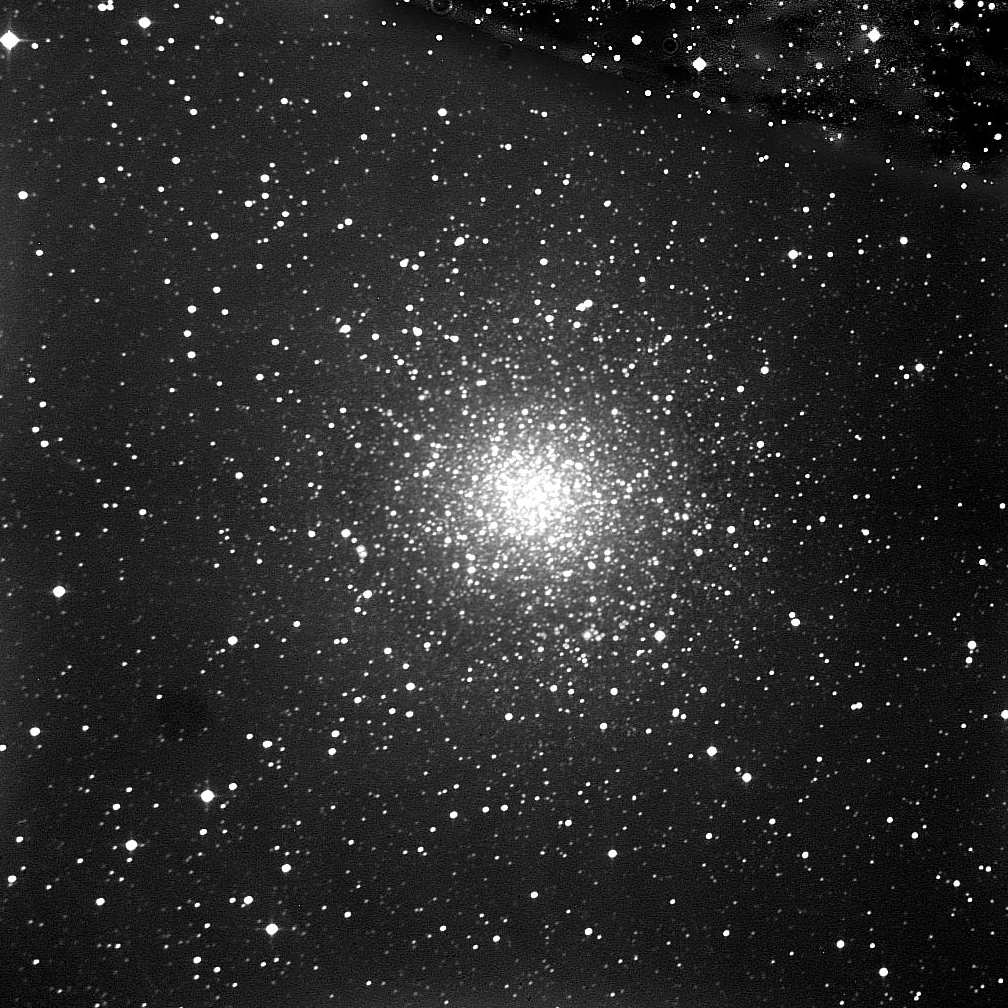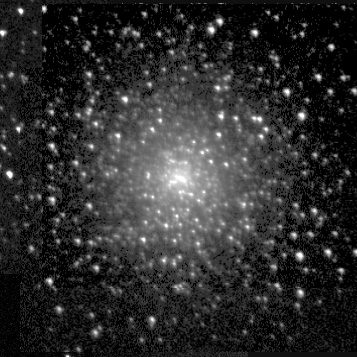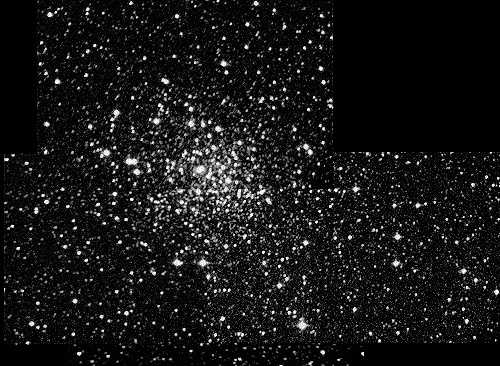Globular
Clusters
Dense, Bright, Ageless Guardians of the Galaxy
Globular clusters are inviting targets, and several good specimens are visible from Stony Ridge Observatory. The list includes M13 in Hercules which rules the northern sky and the so-called “Omega” Centauri, bright enough to be mistaken for a nebulous star and the finest example of its kind, best seen from the southern hemisphere.
One of the challenges with imaging these clusters is choosing the proper exposure. Due to the density of stars at their cores which can easily saturate the camera’s sensor, making a single exposure of long duration can leave a congealed mass of light at the center. To help “unpack” these tightly congested regions, a reasonable image scale must be chosen, this achieved by increasing the focal length appropriately.
SRO’s 30-inch telescope at a focal ratio of f/6 has sufficient magnification to achieve very good results with regard to resolution, this in addition to the substantial light gathering capacity of such a large mirror. Electronic sensors can, in one shot, render a color image. These OSC cameras offer such convenience at a price: their resolution isn’t as great as that afforded by a sensor without the color enabling Bayer Matrix.
The pictures here were reproduced from monochrome exposures on emulsion media or adapted from electronic cameras.

M14 (NGC 6402)
Steve Brewster
Discovered by Charles Messier in 1764, this cluster can be detected in binoculars as an indistinct patch of light in southeastern Ophiuchus. In a small telescope, not much more is revealed. However, in this 60 second exposure made with a sensitive CCD camera, the view is rewarding, While far more stars appear in the image than can be seen visually, that is nowhere near the entire population of around 150,000 suns.
The light from M14 takes around 29,000 years to reach earth which means it's a distant denizen within our own galaxy. Reflecting on journey's end for the photons captured here, at just under 5 hours to go, they passed Pluto; in the last 40 minutes or so, Jupiter; in the last second and a half, the Moon before finally reflecting off the mirrors of he Carroll reflector which then channeled them into the sensor of the camera to be detected and absorbed.

M14 (NGC 6402)
Steve Brewster
Discovered by Charles Messier in 1764, this cluster can be detected in binoculars as an indistinct patch of light in southeastern Ophiuchus. In a small telescope, not much more is revealed. However, in this 60 second exposure made with a sensitive CCD camera, the view is rewarding, While far more stars appear in the image than can be seen visually, that is nowhere near the entire population of around 150,000 suns.
The light from M14 takes around 29,000 years to reach earth which means it's a distant denizen within our own galaxy. Reflecting on journey's end for the photons captured here, at just under 5 hours to go, they passed Pluto; in the last 40 minutes or so, Jupiter; in the last second and a half, the Moon before finally reflecting off the mirrors of he Carroll reflector which then channeled them into the sensor of the camera to be detected and absorbed.

M15 (NGC 7078)
Sara Martin and Pam Sable
This image was obtained using an SBIG ST6 CCD camera with the Carroll .76m reflector. Though not evident in this photo, the densely populated globular has a planetary nebula called Pease 1 located near its core. As far as astronomers have been able to detect, it is one of only four such associations between these types of objects.
A number of supernovae have been recorded in M15 and it possess the third greatest number of variable stars in any globular cluster. The center of M-15 is thought to have undergone an event called core-collapse whereby tightly packed stars may have contributed to the formation of a black hole. According to NASA estimates, if such has occurred, it would have a mass of around 4,000 Suns.
Brian W. Murphy of Butler University has written a story of the details of M-15 and globular clusters entitled A Thousand Blazing Suns: The Inner Life of Globular Clusters.

M15 (NGC 7078)
Sara Martin and Pam Sable
This image was obtained using an SBIG ST6 CCD camera with the Carroll .76m reflector. Though not evident in this photo, the densely populated globular has a planetary nebula called Pease 1 located near its core. As far as astronomers have been able to detect, it is one of only four such associations between these types of objects.
A number of supernovae have been recorded in M15 and it possess the third greatest number of variable stars in any globular cluster. The center of M-15 is thought to have undergone an event called core-collapse whereby tightly packed stars may have contributed to the formation of a black hole. According to NASA estimates, if such has occurred, it would have a mass of around 4,000 Suns.
Brian W. Murphy of Butler University has written a story of the details of M-15 and globular clusters entitled A Thousand Blazing Suns: The Inner Life of Globular Clusters.

M71 (NGC 6838)
Steve Brewster
Is it, or isn't it...? Located in the constellation Sagitta, M-71 has, at times, been classified as either a dense, open cluster or a very loose globular. The determining factor arose from studies which looked at the temperature - luminosity relationship of member stars and found their profiles to more closely align with those in globular clusters.
Globulars are classified by their *Shapley-Sawyer concentrations of stars and are designated with Roman numerals I (most highly condensed) to XII (loosely condensed). The class for M-71 is undetermined, but probably higher than IX. By comparison, M-13 is class V, M-14 a class VIII, and M-15 a class IV.
This panel is a mosaic of four, thirty-second exposures using the 30-inch ( 0.76-m) f/6 Carroll reflector and SBIG ST6 CCD camera.

M71 (NGC 6838)
Steve Brewster
Is it, or isn't it...? Located in the constellation Sagitta, M-71 has, at times, been classified as either a dense, open cluster or a very loose globular. The determining factor arose from studies which looked at the temperature - luminosity relationship of member stars and found their profiles to more closely align with those in globular clusters.
Globulars are classified by their *Shapley-Sawyer concentrations of stars and are designated with Roman numerals I (most highly condensed) to XII (loosely condensed). The class for M-71 is undetermined, but probably higher than IX. By comparison, M-13 is class V, M-14 a class VIII, and M-15 a class IV.
This panel is a mosaic of four, thirty-second exposures using the 30-inch ( 0.76-m) f/6 Carroll reflector and SBIG ST6 CCD camera.







